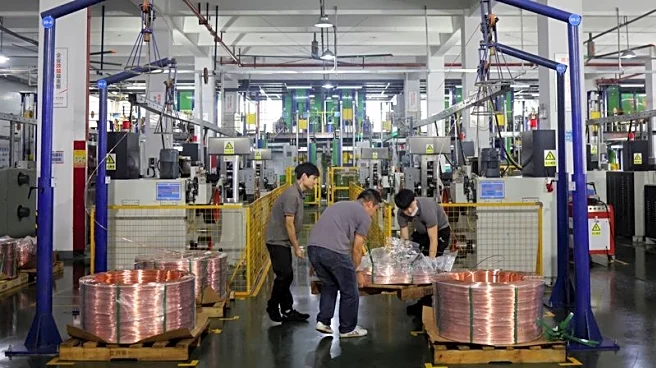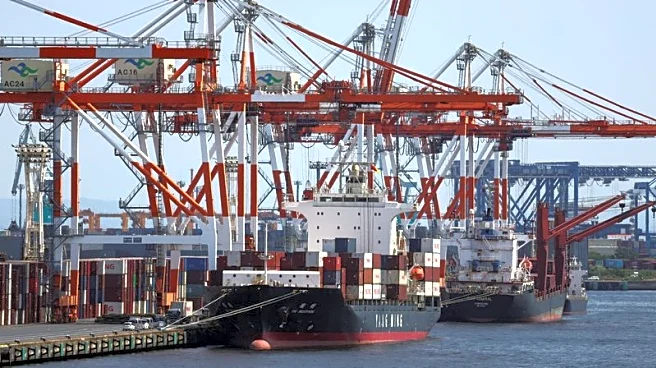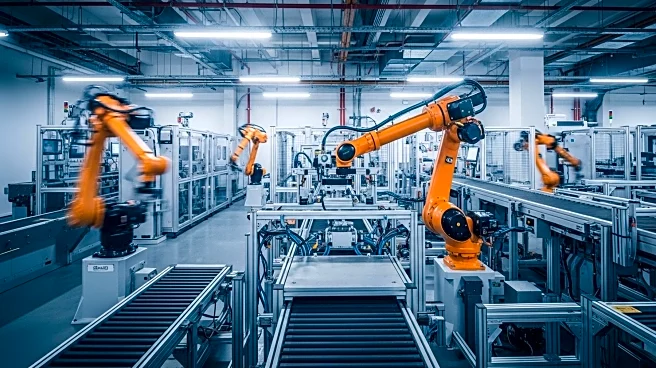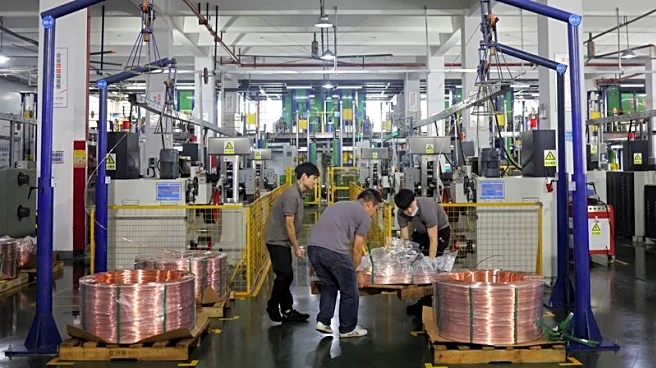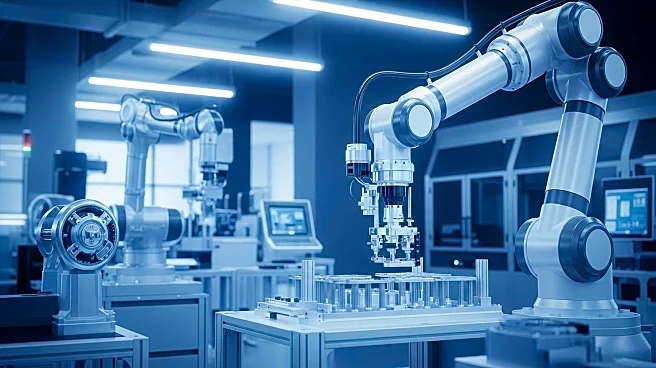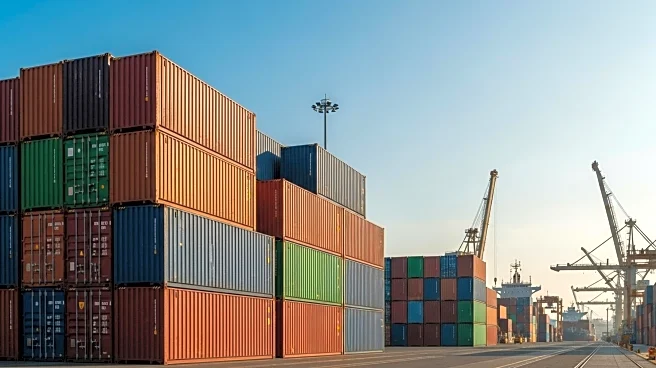What's Happening?
China's manufacturing sector exhibited a slight improvement in August 2025, as indicated by the Purchasing Managers' Index (PMI), which rose to 49.4 from 49.3 in July. This marks the fifth consecutive month of contraction, although the marginal increase suggests potential stabilization in manufacturing activity. The PMI index, which remains below the critical 50 mark, reflects ongoing contraction in the sector. Despite the challenges, production activity has accelerated, and market expectations have improved, according to official data from the National Bureau of Statistics. The sub-index for production stood at 50.8, indicating expansion for the fourth consecutive month, while the sub-index for new orders rose to 49.5. Key sectors such as high-tech and equipment manufacturing continue to support the industry, with PMIs of 51.9 and 50.5, respectively.
Why It's Important?
The slight recovery in China's manufacturing sector is significant as it suggests potential stabilization amidst ongoing contraction. This development is crucial for global trade, particularly in the context of trade negotiations with the United States. The improvement in production activity and market expectations could alleviate supply-demand imbalances and stabilize prices, benefiting industries reliant on Chinese manufacturing. The sector's performance is pivotal for China's macroeconomic recovery, influencing global supply chains and economic stakeholders. The continued expansion in high-tech and equipment manufacturing highlights China's strategic focus on these sectors, which could impact international competition and trade dynamics.
What's Next?
Looking ahead, China's macroeconomy is expected to continue its steady recovery, supported by favorable momentum in manufacturing demand. The non-manufacturing sector also shows signs of expansion, with improved supply-demand relationships and stable prices. As policies aimed at regulating market competition take effect, domestic demand potential is anticipated to be further released, driving sustained improvement in related industries. Industry analysts predict that financial support for the real economy will remain effective, with consumer spending and new growth drivers showing strong performance.




